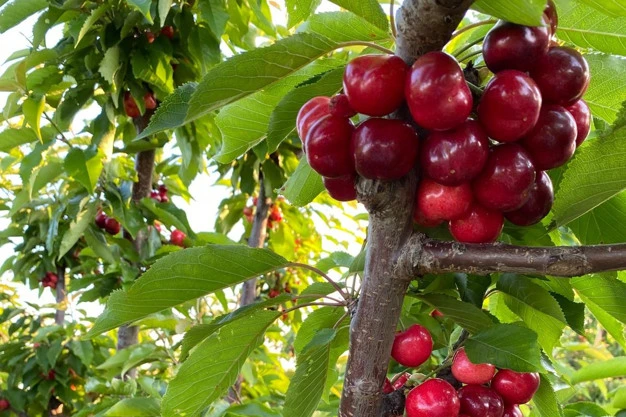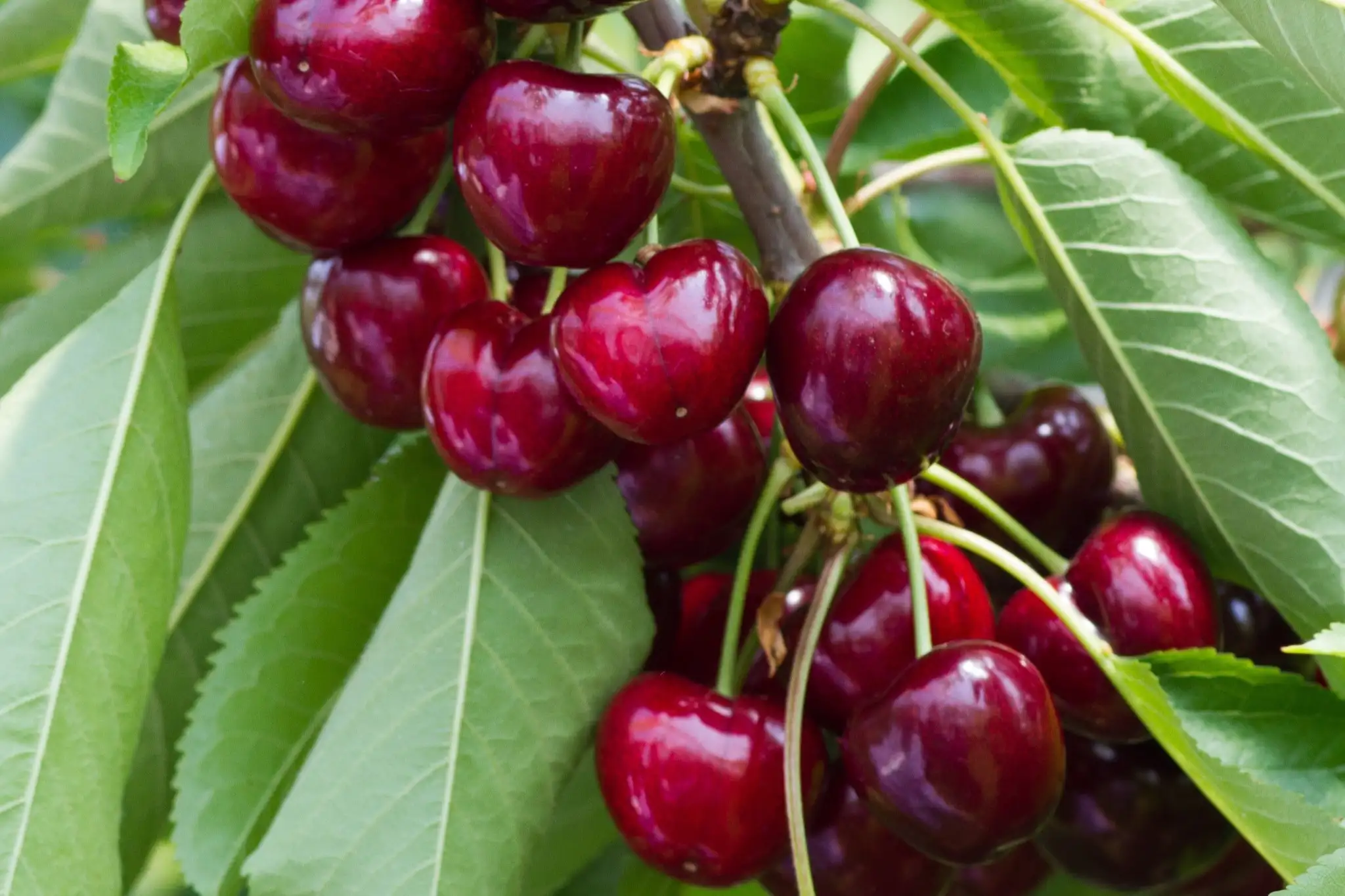The development of new Picota-type sweet cherry cultivars aims to improve fruit quality and reduce endocarp (stone) size while maintaining good postharvest performance and the distinctive trait of stemless harvesting.
A recent study carried out in the Jerte Valley, Spain, from an initial set of 20 genotypes, identified four selections (“L 12–3”, “L 14–16”, “L 14–17”, “L 35–72”) based on a pedicel detachment force below 7.5 N and a fruit weight equal to or greater than 9 g, thereby combining commercial size with compatibility for dry detachment typical of “Picota” varieties.
Among them, “L 14–17” showed the lowest detachment force, while “L 12–3” displayed the best physiological stability during modified atmosphere packaging (MAP) storage at 0 °C for two months, with low ethylene emissions, low respiration rate, stable titratable acidity, and reduced visible damage.
Postharvest performance and stability
The other three selected genotypes produced higher amounts of ethylene and showed greater damage, confirming a strong positive correlation (r > 0.89) between ethylene production and mechanical injury.
MAP allowed all new selections to maintain high deformation resistance (66–78 %) and high soluble solids content even after two months (18.3–21.3 %), while acidity declined progressively with genotype-dependent di_erences.
Anatomical characterization using X-ray computed tomography (X-ray CT), applied for the first time in sweet cherry, enabled a non-destructive three-dimensional analysis of the endocarp and the morphology of the sub-peduncular area (SPA), both key zones for mechanical resistance and postharvest behavior.
“L 14–16” showed the most marked reduction in endocarp volume (−49 % compared to the reference cultivar “Ambrunés”), improving the pulp-to-stone ratio, while “L 14–17” showed an intermediate reduction and “L 35–72” values similar to traditional varieties.
Anatomical traits and structural variability
Qualitative di_erences in SPA were also observed: narrower, conical structures in “L 14–16” and “L 14–17”, broader and rounded ones in “Ambrunés” and “L 35–72”.
This structural variability may influence the physiological sealing of the abscission zone and, consequently, susceptibility to damage and dehydration during storage.
The integration of physiological and anatomical data suggests that “L 12–3” is the most balanced selection, thanks to its postharvest stability, suitable size, and good stemless detachment behavior, while “L 14–17” stands out for its low detachment force, advantageous for rapid manual harvesting.
“L 14–16” showed substantial anatomical improvements with a reduced stone size, an important quality attribute from the consumer’s perspective, while “L 35–72” maintained an SPA morphology similar to traditional varieties, which may favor better sealing of the pedicel wound and thus greater commercial integrity despite its larger stone size.
Conclusions and breeding prospects
In conclusion, the results demonstrate the possibility of combining historically contrasting traits, such as fruit size and ease of detachment, and highlight the value of computed tomography as a tool for the early selection of internal functional traits to support breeding programs aimed at developing new-generation Picota-type sweet cherry cultivars.
Source: Alonso, J., Herrero, A., Bodelón, O. G., de Castro, E., Bañuls, P., & Manzano, M. A. (2025). Advancing picota sweet cherry selection through postharvest evaluation and X-ray computed tomography. Postharvest Biology and Technology, 229, 113700. https://doi.org/10.1016/j.postharvbio.2025.113700
Image source: Alonso et al 2025
Andrea Giovannini
University of Bologna (IT)
Cherry Times - All rights reserved












